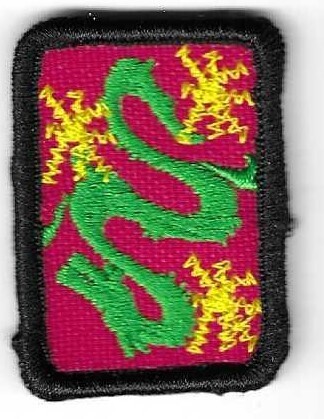Chinese New Year--Ella J Embroidery
Requirements:
Chinese new year
C/S/A:Complete 12
Junior: Complete 10
Brownie: Complete 8
“Guo Nian Hao” means “happy new year”
1) The festival date changes every year. Why is the Chinese New year celebrated on a different date from the international New Year?
2) Homes, city centers, and gift envelopes given to children are decorated with the color red during this celebration time. Why is red used as a color symbol?
3) As mentioned in #3 it is customary to give red envelopes to children. They are also given to parents, grandparents, colleagues, and friends. They are often filled with new, crisp, clean, money notes. There are very specific rules on how much money to put in the envelopes, how to properly give and receive the envelopes. The art work on the envelope also has special meaning. Do a little more research on the red envelopes and create a red envelope of your own. Fill it with play money or a small treat and practice traditional giving and receiving of the envelopes.
4) Sweep, mop, scrub, dust, vacuum, steam -- do anything and everything to make sure your home is spick and span BEFORE the stroke of midnight on Lunar New Year eve. Beginning on the 23rd day of the 12th lunar month (January 28, 2019), Chinese people carry out a thorough ‘winter-cleaning’ of their houses. This is called "sweeping away the dust", and represents a wish to put away old things, bid farewell to the old year, and welcome in the New Year. Never do any housecleaning during the first day of the Chinese New Year celebration. It is believed any cleaning on that day will sweep away all of the good luck that just arrived with the New Year. Generally, it is best to avoid any housecleaning for the first few days of the new year.
Sweep away the dust in your room, meeting space, or community space. Make everything neat and tidy for good luck in the upcoming year.
5) Both the Lion dance and the dragon dance are traditionally performed during the New Year’s celebration. What are the differences between the two dances?
6) Chinese New Year is the largest annual usage of fireworks on the planet. Although many countries have issued the law forbidding this tradition due to the safety, many people still use it. What is the significance of the fireworks?
7) There are 12 Chinese zodiacs that represent the Chinese year. They have a certain sequence that is repeated every 12 years. Rat, Cow or Bull, Tiger, Rabbit, Dragon, Snake, Horse, Sheep, Monkey, Rooster, Dog, and Pig. 2019 is the Year of the Pig. There are also 5 elements accompanying each zodiac that will determine the characters of people.
Metal for those whose birth year ends in 0 or 1
Water for those whose birth year ends in 2 or 3
Wood for those whose birth year ends in 4 or 5
Fire for those whose birth year ends in 6 or 7
Earth for those whose birth year ends in 8 or 9
Find which animal and element are supposed to represent you and your character. Is it accurate? How about your family, friends, and group members?
8) Chinese have some belief about the food they need to eat or should not eat during the New Year celebrations.
Noodles, fish, orange, pomegranate, whole chicken, sunflower seeds, sticky cake, dumplings, and egg rolls are foods that are said to bring prosperity, wealth, family togetherness, happiness, longevity, and fullness.
Gather your group for a tasting party with some traditional Chinese new year foods.
9) The Chinese New Year is also called Spring Festival. Why do they call a celebration in the middle of winter Spring Festival?
10) Lantern Festival marks the end of the New Year celebrations. How many days after the start of the New Year festivities is the lantern festival and how is it celebrated?
11) Many of the Chinese New year festivities are based on legends and stories of the past. What is a legend? Discuss with your group some legends that you have heard. Now think of a new year’s tradition that your family has and create a legend to explain your tradition. Share your legend with your group.
12) Make your own paper lantern:
Take a square piece of paper. Decorate it in any way desired. Fold diagonally once to create a triangle. Fold diagonally again forming a smaller triangle. Fold diagonally again forming an even smaller triangle. (The paper should have been folded in half diagonally 3 times.) With folded edge on left, make a cut 1/4 inch from bottom cutting to within 1/4 inch of diagonal edge. Turn so diagonal edge is on left, repeat cut 1/4 inch from last cut to within 1/4 inch of straight edge. Repeat cuts in this manner until you reach the top. Unfold.
13) Attend a local Chinese new year festival. Make a list of 5 things that you now recognize and understand about the celebrations that you didn’t previously. Share those 5 things with your group.
14) Host your own Chinese New Year celebration party. Invite a younger group to join your party. Perform skits and dances to teach them the things that you learned about the Chinese New year.
